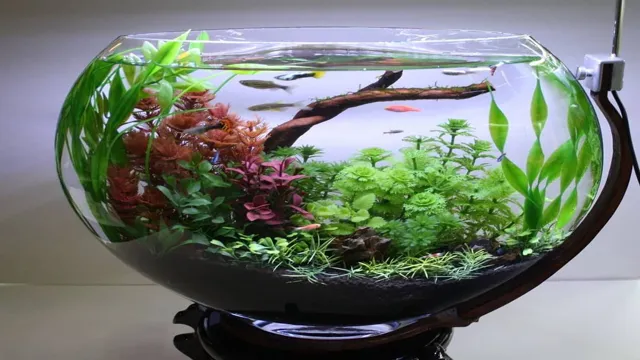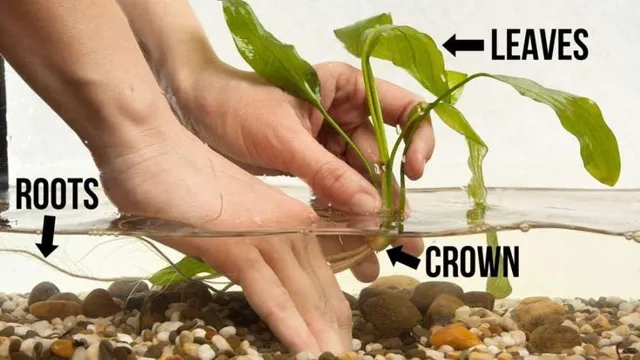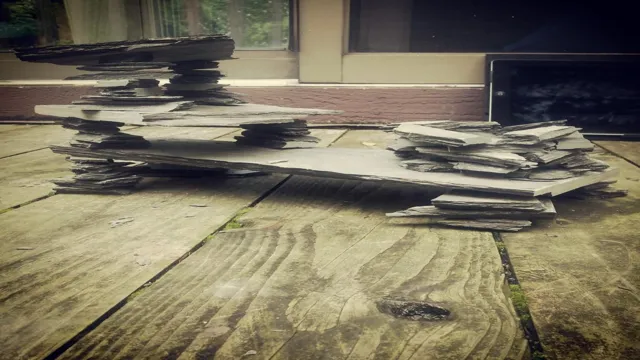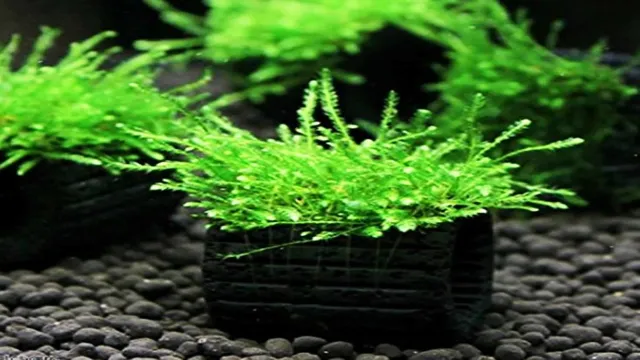Have you ever wondered how to maintain clean, clear water in your aquarium? Well, cycling water in your aquarium is the answer! This process removes harmful chemicals and waste and keeps your fish healthy and happy. And don’t worry, it’s not as complicated as it sounds! Cycling water is simply the process of allowing the beneficial bacteria in your aquarium to break down the toxins that fish produce. Just like we rely on good bacteria in our bodies to keep us healthy, your aquarium relies on these bacteria to maintain a healthy environment for your fish.
Without this process, the toxins in the water can build up and harm your fish. But by cycling the water in your aquarium, you can keep your fish safe and happy. Think of it like a self-cleaning fish tank.
Just like a self-cleaning oven, you don’t have to constantly remove all the waste and scrub the tank. Instead, cycling the water allows your aquarium to clean itself and maintain a healthy environment for your fish. So if you’re new to aquariums or just need a refresher, cycling water is an essential step to keeping your fish healthy and happy.
And with a little bit of knowledge and patience, you can easily maintain a clean and clear aquarium that your fish will love.
Understanding What Water Cycling Is
If you’re new to aquariums, the term “water cycling” may sound a bit confusing. Essentially, water cycling is the process of establishing a healthy and balanced environment in your aquarium. This is done by encouraging the growth of good bacteria that break down harmful chemicals and waste in the water.
To do this, you’ll need to add beneficial bacteria to your aquarium and give them time to grow and multiply. There are several ways to cycle water in an aquarium, but the most common method is to use a cycling product that contains live beneficial bacteria. This can be added to your tank along with some fish food to kickstart the process.
Over time, the bacteria will grow, and your aquarium will become a self-sustaining ecosystem. It’s essential to monitor your aquarium during the cycling process to ensure that your fish are safe and healthy. With a bit of patience and attention to detail, you can successfully cycle water in your aquarium and enjoy a thriving underwater world.
What Happens During Cycling
Water cycling is a process that occurs naturally in water bodies such as rivers, lakes, and oceans. Understanding this phenomenon is important, especially for those who rely on these water bodies for their livelihoods and recreation. During water cycling, water moves through different stages in a continuous process of evaporation, condensation, and precipitation.
The cycle begins when the sun’s heat causes water on the Earth’s surface to evaporate and form water vapor. The vapor rises into the atmosphere and cools, causing it to condense into tiny droplets that form clouds. The droplets become heavy and eventually fall back to the Earth as precipitation, which can take the form of rain, snow, sleet, or hail.
This precipitation becomes part of groundwater, runoff, or surface water that flows back to larger water bodies. Water cycling is an essential process for the environment and all living things as it helps maintain the balance of the Earth’s ecosystems.

Why Is It Important for Your Fish?
Water cycling is a crucial process in ensuring your fish stay healthy and thrive in their aquarium. Essentially, it involves establishing a natural balance of beneficial bacteria that break down harmful toxins in the water. This cycle helps to prevent spikes in toxic ammonia and nitrate levels that can be deadly to your fish.
As water volume increases in an aquarium, so do waste products, hence the importance of consistent water cycling. Without proper cycling of the water, the aquarium’s ecosystem can become unstable, leading to the buildup of harmful toxins, disease, and stress for your fish. Understanding and regularly monitoring the water cycle in your aquarium is crucial for maintaining a healthy environment for your fish to live in. (See Also: How to Disassemble Aquarium Filter: Step-by-Step Guide for Easy Maintenance)
How to Cycle Water in Your Aquarium
If you’re setting up a new aquarium, cycling the water is an essential step for ensuring the health of your fish and other aquatic creatures. The first step is to fill your tank with water and add a source of ammonia, such as fish food or pure ammonia drops. This will kickstart the nitrogen cycle, which involves beneficial bacteria converting ammonia into less harmful compounds.
You’ll need to test the water regularly using a test kit to monitor the levels of ammonia, nitrite, and nitrate. Once the ammonia levels have peaked and started to decrease, you’ll start to see the nitrite levels rise before eventually dropping too. Finally, nitrate levels will begin to increase, and you may need to perform water changes to keep them in check.
It’s important to be patient during the cycling process and avoid adding any fish until the water has completely cycled. By following these steps, you can ensure a healthy and thriving aquarium for your aquatic pets.
Add Ammonia to Your Aquarium
If you’re new to the aquarium hobby, understanding how to cycle the water in your tank is crucial to the health of your fish. One way to kickstart the nitrogen cycle is by adding a small amount of ammonia to your water. This may sound counterintuitive, as we typically associate ammonia with toxicity, but in small amounts, it can actually be beneficial.
The ammonia will provide a food source for beneficial bacteria that will eventually convert it into nitrates, which are much less harmful to your fish. You can use pure ammonia bought from a hardware store, or look for ammonium chloride specifically designed for aquariums. It’s important to add the ammonia slowly and gradually, so as not to shock your fish or overload the bacteria.
Start with just a few drops per day and gradually increase over the course of several days, monitoring your water parameters as you go. Remember, patience is key when cycling a new aquarium!
Test the Ammonia Levels
Cycling the water in your aquarium is crucial to the health and well-being of your fish. One important step in this process is testing the ammonia levels in the water. Ammonia is produced by fish waste, decaying vegetation, and uneaten food.
High levels of ammonia can be toxic to fish and cause stress, illness, and even death. To test the ammonia levels, you can use a water test kit that measures ammonia levels in parts per million (ppm). Ideally, you want the ammonia levels to be at zero ppm, but levels up to 0.
25 ppm are acceptable during the initial cycling process. If you detect high levels of ammonia, it’s important to take action immediately by performing a water change and potentially adjusting the feeding and cleaning schedule for your aquarium. By regularly testing and maintaining the ammonia levels in your aquarium, you can ensure a healthy and thriving aquatic environment for your fish.
Add Bacteria to the Tank
To cycle the water in your aquarium, one of the key steps is to add bacteria to the tank. These bacteria play an essential role in breaking down the waste produced by your fish. Without them, the tank can quickly become a toxic environment for your aquatic friends.
There are a few ways to introduce bacteria to your aquarium. One option is to purchase a bacterial supplement from your local pet store and add it to the water. Another option is to add filter media from an established aquarium, as this will already contain beneficial bacteria.
It’s important to give the bacteria time to establish themselves in the tank before adding any fish. This process can take several weeks, and during this time, it’s important to monitor the tank’s water parameters regularly to ensure everything stays in balance. In the end, cycling water properly will lead to a healthier and happier aquatic environment for your fish to thrive in. (See Also: How to Get Cheap Large Aquariums: 5 Money-Saving Tips for Aquarists on a Budget)
Tips for Successful Water Cycling
If you’re setting up a new aquarium or struggling with maintaining water quality, cycling your water is crucial for establishing a healthy ecosystem for your fish. To begin cycling, add ammonia to your tank to encourage the growth of beneficial bacteria that break it down into less harmful nitrates. Testing regularly for ammonia, nitrite, and nitrate levels will help ensure that the cycling process is progressing properly.
It’s important to note that cycling can take several weeks to complete, so patience is key. If you’re in a hurry, seeding your new tank with established filter media or adding bacterial supplements can speed up the process. Once your tank is fully cycled, maintain a consistent water change schedule and avoid overfeeding your fish to keep the ecosystem stable.
By cycling your water correctly and regularly monitoring levels, you can create a healthy and thriving aquarium.
Patience Is Key
When it comes to water cycling, patience is key. It’s important to take things slow and steady to avoid any damage to your aquatic plants and animals. One of the most important tips for successful water cycling is to start with a few hardy fish and give them time to acclimate to their new environment.
Resist the urge to add more fish right away as this can disrupt the delicate balance of the ecosystem. Another crucial aspect of water cycling is testing the water regularly to ensure that the ammonia and nitrite levels are within the safe range for your fish. This can take time, but it’s well worth the effort to ensure the health and longevity of your aquatic pets.
Remember, the key to successful water cycling is patience. Don’t rush the process and you’ll have a thriving and beautiful aquarium before you know it.
Monitor Ammonia and Nitrite Levels
When it comes to establishing a healthy aquatic environment, monitoring ammonia and nitrite levels is crucial. These two substances are commonly produced during the water cycling process, as beneficial bacteria break down fish waste and other organic matter. While ammonia can be toxic to fish, nitrite is actually even more dangerous, and prolonged exposure can result in serious illness or even death.
To prevent this, it’s important to regularly check the levels of ammonia and nitrite and take action if necessary. One tip for successful water cycling is to avoid overfeeding your fish, as excess food can contribute to ammonia buildup. Additionally, using a high-quality filtration system can help remove waste and other harmful substances from the water.
Adding live plants to your aquarium can also help absorb excess nutrients and improve water quality. Regular water changes are also important to dilute any harmful substances in the water. In short, establishing and maintaining a healthy aquatic environment requires attention to detail and consistent monitoring of ammonia and nitrite levels.
By following these tips and taking steps to keep your aquarium clean and balanced, you can help ensure the health and happiness of your fish.
Conclusion
In conclusion, cycling water in an aquarium is a critical step in creating a healthy and thriving ecosystem for your aquatic pets. It can seem daunting at first, but with the right tools and knowledge, you’ll be well on your way to creating a balanced environment for your fish to flourish. Just remember, cycling is not just for Tour de France contenders; it’s also an essential part of aquarium maintenance. (See Also: How to Get More Oxygen in Aquarium: Top Tips for Better Water Circulation)
So, get those wheels turning and start cycling your aquarium water today!”
FAQs
Why is it important to cycle water in aquarium?
Cycling water is important in aquariums because it establishes a healthy environment for fish and other aquatic creatures. It helps in breaking down harmful toxins and converting them into less harmful compounds.
How long does it take to cycle water in an aquarium?
The time required to cycle water in an aquarium varies depending on several factors, including the size of the tank, the number of fish, and the filter type. It may take up to 6 to 8 weeks to establish a stable and healthy biological environment.
What are the methods for cycling water in an aquarium?
The most common methods for cycling water in an aquarium are fishless cycling and fish-in cycling. In fishless cycling, ammonia is added to the aquarium to promote bacterial growth. Fish-in cycling involves adding fish to the tank to produce ammonia.
How do you monitor the water parameters during cycling?
It is essential to monitor water parameters like ammonia, nitrite, and nitrate levels during cycling. You can use test kits to measure these parameters regularly and keep a log of the results.
What should you do if ammonia or nitrite levels become too high during cycling?
If ammonia or nitrite levels become too high during cycling, a partial water change should be done, and the feeding of fish should be reduced. It is also recommended to add beneficial bacteria supplements to help speed up the cycling process.
Can you add fish to an uncycled aquarium?
It is not recommended to add fish to an uncycled aquarium. The water may contain high levels of harmful compounds like ammonia and nitrite that can harm the fish’s health. It is advisable to wait until the cycling process is complete before adding fish.
How often should you cycle water in an established aquarium?
It is not necessary to cycle water regularly in an established aquarium. However, partial water changes should be done regularly to remove waste and maintain water quality. It is also recommended to clean the filter and substrate periodically.







